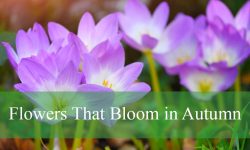Flowers have long been a symbol of love, passion, and deep emotions across different cultures. From ancient mythology to modern-day romantic gestures, flowers that mean love have played a significant role in expressing affection, devotion, and even unspoken feelings. Whether gifted on special occasions or used to convey heartfelt messages, these blooms hold a timeless charm that continues to captivate hearts.
Each flower carries its own unique meaning, making it even more special when chosen with care. Roses, tulips, and lilies are among the most well-known flowers that mean love, but many other beautiful blossoms also symbolize romance, loyalty, and admiration. Their colors, shapes, and fragrances create a language of love that speaks beyond words, making them perfect for expressing emotions in a meaningful way.
In this article, we’ll explore 47 stunning flowers that mean love, each with its own symbolism and beauty. Along with breathtaking pictures, you’ll discover the fascinating meanings behind these flowers and how they have been cherished throughout history. Whether you’re looking for the perfect flower to gift a loved one or simply want to learn more about floral symbolism, this guide will inspire you with nature’s most romantic blooms.
Different Types of Flowers That Mean Love
Rose
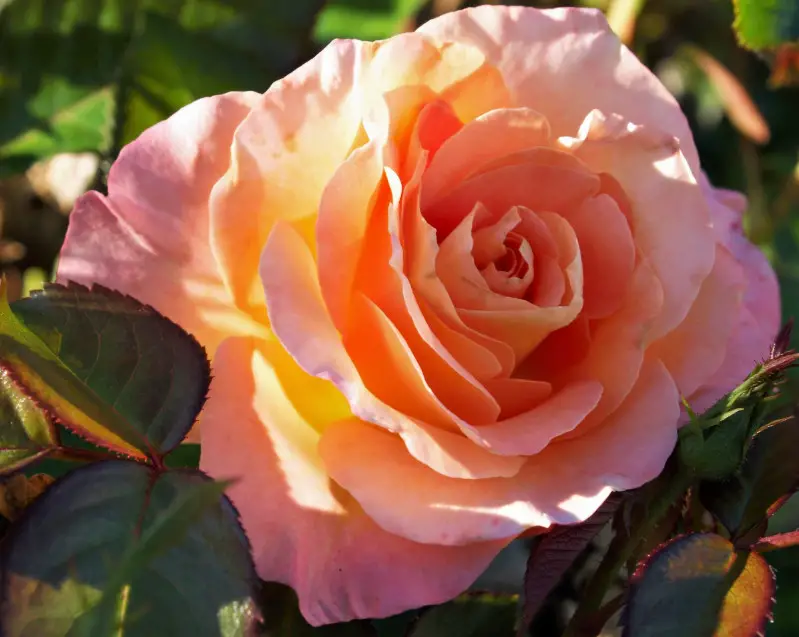
In a garden of love, the rose is the queen, symbolizing passion and romance for centuries. With its velvety petals and intoxicating fragrance, the rose has captivated hearts around the world. Roses come in various colors, each carrying a different meaning—red for love, white for purity, and yellow for friendship. They are widely used in floral arrangements, perfumes, and even skincare products due to their soothing properties.
Roses thrive in USDA hardiness zones 3-11, depending on the variety. They require full sun (at least six hours per day) and well-drained, fertile soil. Regular pruning in early spring encourages healthy growth and abundant blooms. Watering deeply but infrequently helps prevent diseases like powdery mildew. Applying mulch around the base retains moisture and suppresses weeds, ensuring a vibrant and long-lasting display in the garden.
Tulip
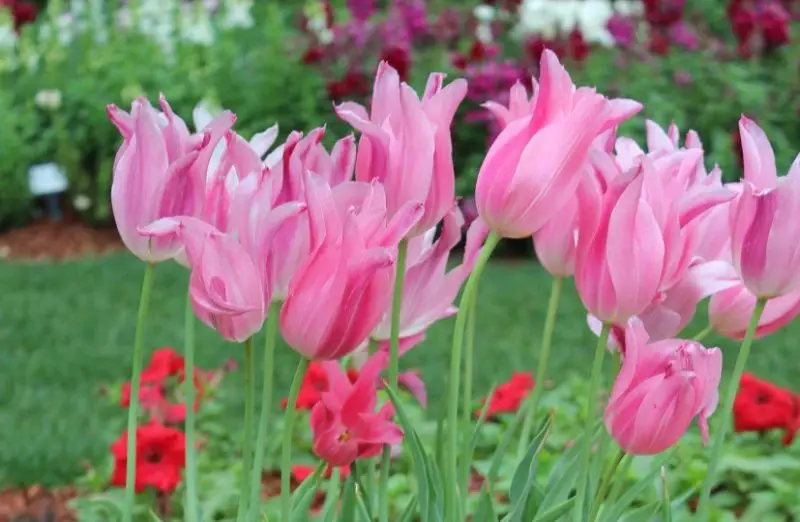
Heralding the arrival of spring, tulips are a declaration of love and elegance. Their cup-shaped blooms and vibrant colors make tulips a favorite in gardens and bouquets. Originating from Central Asia, tulips became a symbol of wealth and beauty during the 17th-century Dutch “Tulip Mania.” Today, they remain a beloved spring flower, available in a wide range of colors, from classic red and yellow to exotic bi-colored varieties.
Tulips grow best in USDA hardiness zones 3-8. They require full sun and well-drained soil to flourish. The bulbs should be planted in the fall, about 6-8 inches deep, before the ground freezes. Watering is needed after planting but should be reduced during dormancy to prevent rot. Once blooming ends, allow the foliage to wither naturally to replenish energy for the next season. For continuous displays, gardeners can stagger bulb plantings or select early, mid, and late-season varieties.
Orchid
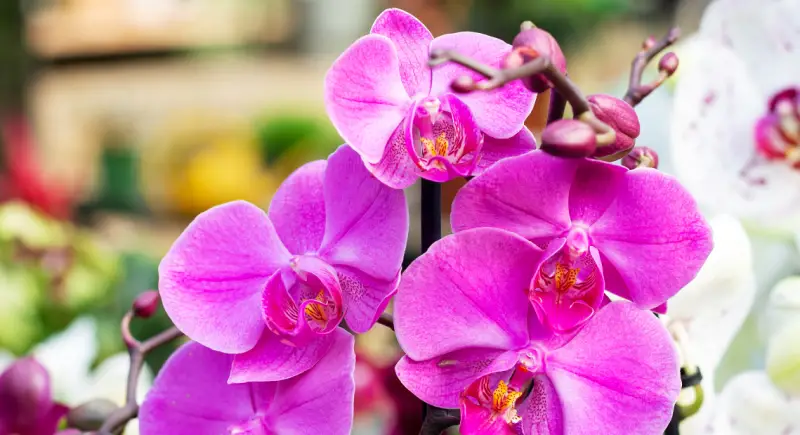
Elegance and exotic beauty define the orchid, a flower that symbolizes love and luxury. With over 25,000 species worldwide, orchids exhibit extraordinary diversity in color, size, and shape. They are prized for their long-lasting blooms and intricate patterns, making them a favorite for home décor and gifts. Some varieties, like the Phalaenopsis (moth orchid), can bloom for months with proper care.
Orchids thrive in USDA hardiness zones 10-12 when grown outdoors, but they are commonly kept as houseplants in cooler regions. They require indirect light, warm temperatures, and high humidity. A well-draining orchid mix, such as bark or sphagnum moss, prevents root rot. Watering should be done sparingly—once a week is sufficient for most varieties. Misting the leaves or placing a humidity tray nearby can help maintain the moisture levels orchids need to flourish.
Lily
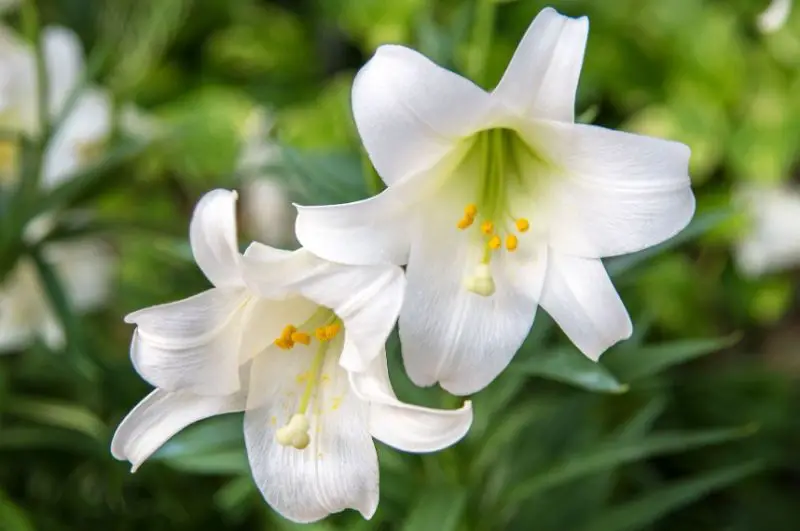
With a fragrance that enchants the senses, lilies are symbols of purity and refined beauty. Their large, trumpet-shaped blooms are often associated with devotion and love, frequently appearing in wedding bouquets and religious ceremonies. Lilies come in many varieties, including Asiatic, Oriental, and Trumpet lilies, each offering a unique look and scent.
Lilies grow best in USDA hardiness zones 4-9. They prefer full sun to partial shade and well-drained, slightly acidic soil. Plant lily bulbs in the fall or early spring, 4-6 inches deep, to allow strong root development. Regular watering is essential, but avoiding waterlogging is key to preventing diseases like botrytis. Deadheading spent flowers encourages more blooms, while cutting back yellowing foliage helps redirect nutrients for next season’s growth.
Carnation
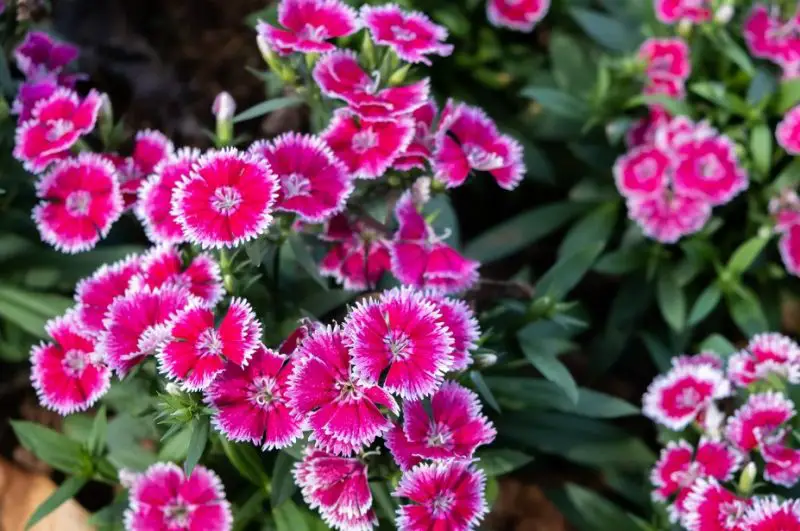
Delicate and ruffled, carnations are timeless symbols of love and admiration. Their rich history dates back over 2,000 years, making them one of the oldest cultivated flowers. Carnations come in a variety of colors, each with its own meaning—pink represents gratitude, white signifies purity, and red conveys deep love. Their long vase life makes them a popular choice for bouquets and floral arrangements.
Carnations thrive in USDA hardiness zones 3-9. They prefer full sun and well-drained, slightly alkaline soil. Regular watering is needed, but excess moisture should be avoided to prevent root rot. Pinching back young plants encourages bushier growth, while deadheading spent blooms promotes continuous flowering. With proper care, carnations provide months of vibrant color and fragrance in both gardens and floral displays.
Sunflower
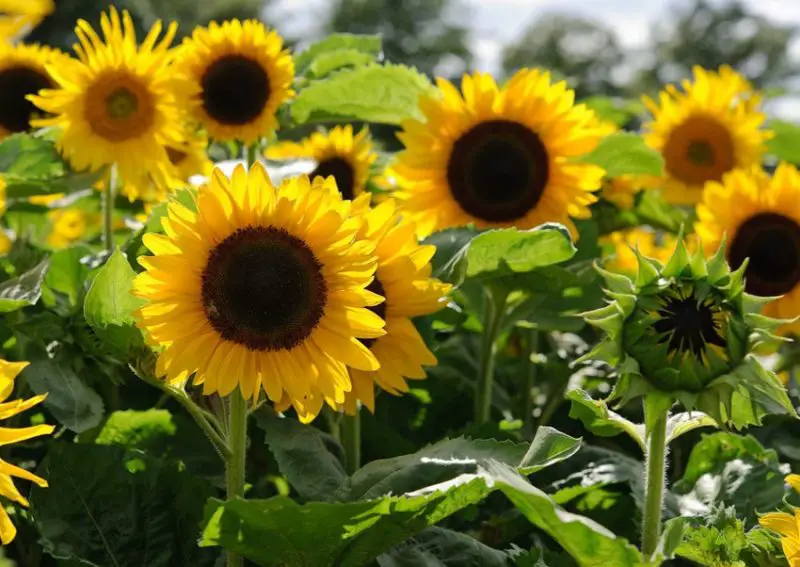
Radiating warmth and happiness, sunflowers are symbols of adoration and loyalty. Their towering stems and large, golden blooms capture the essence of sunny devotion. Sunflowers follow the sun—a phenomenon known as heliotropism—turning their faces toward the light as they grow. Their seeds are not only a nutritious snack but also a valuable source of oil and bird food.
Sunflowers thrive in USDA hardiness zones 4-9. They require full sun and well-drained soil, with plenty of space for their deep roots. Regular watering is essential, especially during dry periods, but overwatering should be avoided to prevent root rot. Tall varieties may need staking to support their heavy flower heads. Planting in succession ensures continuous blooms, keeping the garden bright and cheerful throughout summer.
Daisy
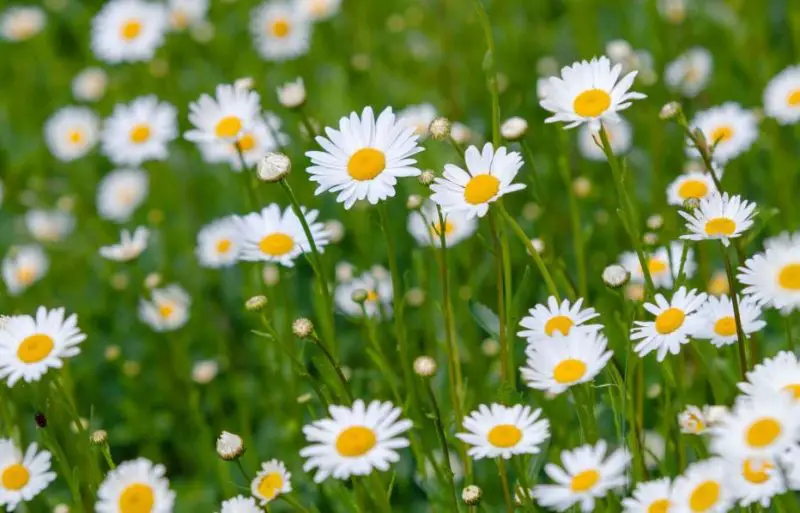
Innocent and cheerful, daisies are symbols of purity and true love. Their simple charm and bright petals evoke feelings of joy and simplicity. Daisies belong to the Asteraceae family and have a distinctive structure, with a yellow disk center surrounded by delicate white petals. These resilient flowers are commonly used in wildflower meadows, floral arrangements, and medicinal teas.
Daisies grow well in USDA hardiness zones 3-9. They prefer full sun and well-drained soil but can tolerate partial shade. These low-maintenance perennials require minimal care beyond occasional watering. Regular deadheading encourages continuous blooming, while dividing the plants every few years prevents overcrowding. With their long-lasting flowers and easy growth, daisies bring a carefree beauty to any garden.
Lavender
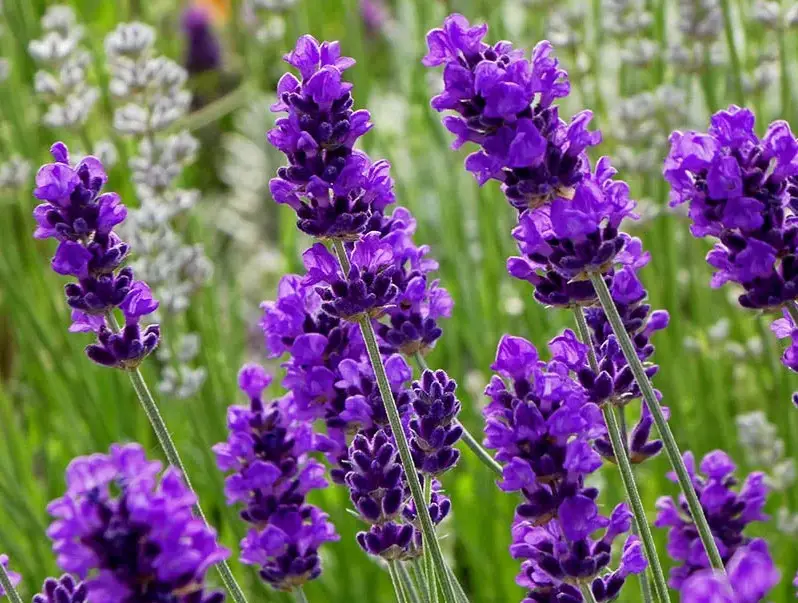
Calming and fragrant, lavender is a symbol of devotion and tranquility. Its soothing scent and delicate purple flowers make lavender a beloved choice for romantic and relaxing settings. Used in aromatherapy, herbal remedies, and culinary dishes, lavender is prized for its versatility. Bees and butterflies are especially attracted to its nectar-rich blooms, making it a valuable pollinator-friendly plant.
Lavender thrives in USDA hardiness zones 5-9. It prefers full sun and well-drained, sandy soil, as excessive moisture can cause root rot. Pruning after flowering encourages bushy growth and prolongs the plant’s lifespan. Lavender requires little water once established, making it an excellent choice for drought-resistant landscapes. Whether grown in gardens, containers, or herb beds, lavender brings both beauty and practicality to any space.
Peony
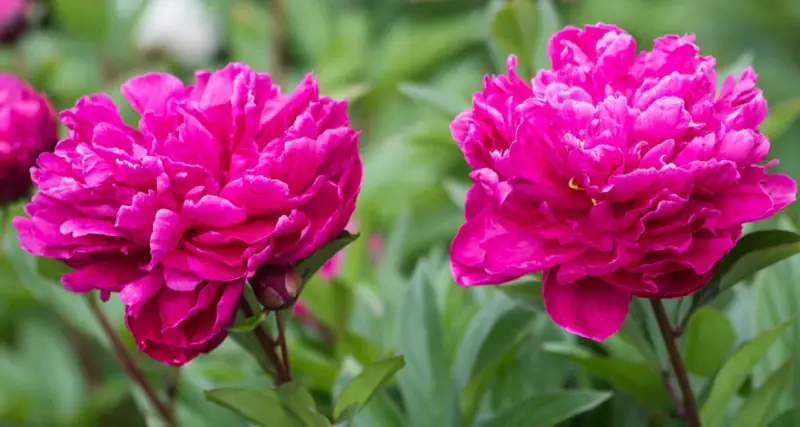
Lush and extravagant, peonies are symbols of romance and prosperity. Their full, fragrant blooms and vibrant colors make peonies a favorite for weddings and celebrations. These perennials can live for decades, often becoming more beautiful with time. Peonies bloom in a variety of shades, including pink, white, red, and even yellow, adding an air of elegance to any landscape.
Peonies thrive in USDA hardiness zones 3-8. They prefer full sun and well-drained soil, requiring minimal care once established. Planting peonies with their eyes (buds) just below the soil surface is crucial for proper blooming. While they are generally low-maintenance, supporting their heavy blooms with stakes can prevent drooping. Deadheading spent flowers encourages a longer flowering season, keeping gardens filled with romance year after year.
Iris
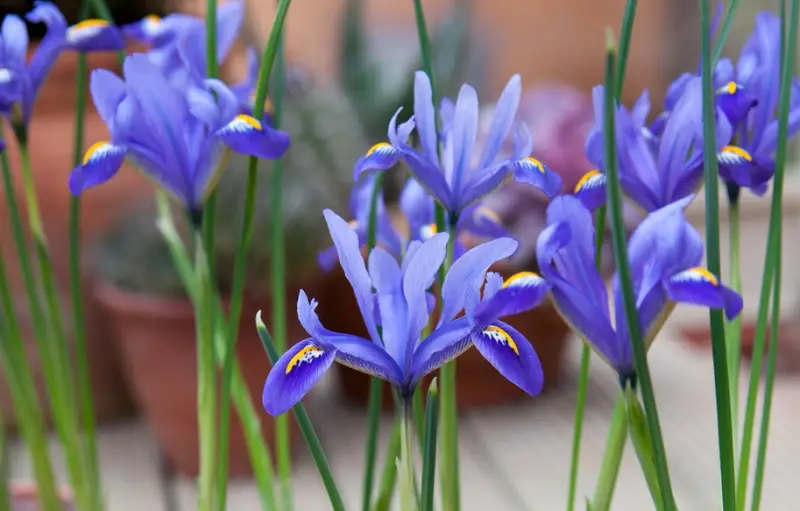
Elegant and mysterious, irises symbolize faith and wisdom, often associated with love and admiration. Their sword-shaped foliage and striking blooms make irises a captivating addition to any landscape. Available in a variety of colors, including purple, blue, yellow, and white, irises have been revered throughout history, even inspiring the French fleur-de-lis symbol.
Irises thrive in USDA hardiness zones 3-9. They require full sun and well-drained soil, flourishing in both garden beds and along water edges. Bearded irises, one of the most popular varieties, need their rhizomes exposed to sunlight to prevent rot. Dividing clumps every few years ensures healthy growth and abundant blooms. With their graceful presence and easy care, irises bring a touch of sophistication to any garden.
Gardenia
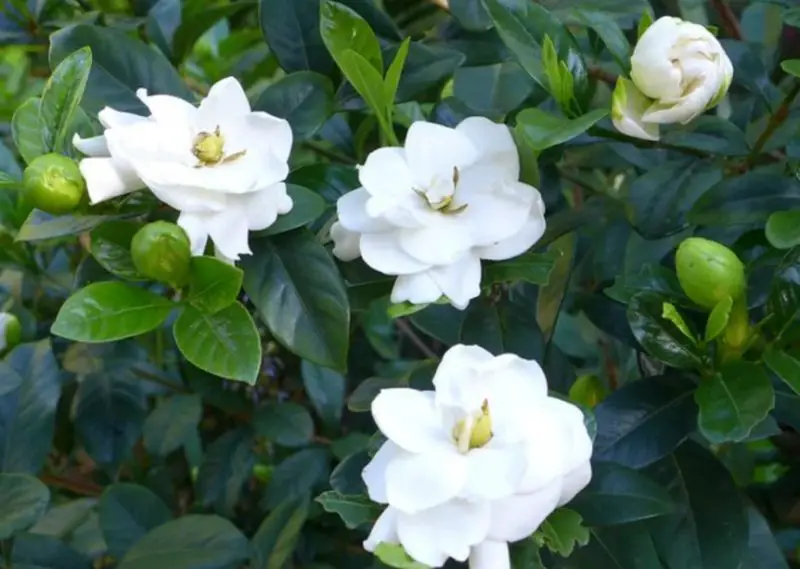
With an intoxicating fragrance, gardenias are symbols of secret love and elegance. Their waxy, white blooms and glossy foliage make gardenias a beloved choice for romantic settings. These evergreen shrubs are prized for their strong scent, often used in perfumes and floral arrangements. However, gardenias can be sensitive to environmental changes, requiring specific conditions to thrive.
Gardenias grow best in USDA hardiness zones 8-11. They prefer humid environments, acidic, well-drained soil, and partial shade to full sun. Regular pruning after flowering helps maintain their shape and encourages new blooms. Feeding with an acid-loving plant fertilizer keeps the leaves glossy and green. Mulching around the base helps retain moisture and regulate soil temperature, ensuring healthy growth.
Cherry Blossom
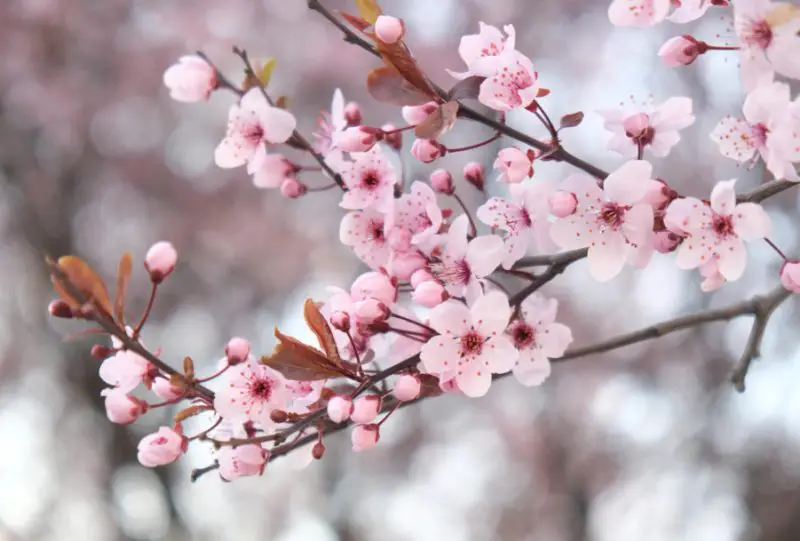
A breathtaking spectacle, cherry blossoms symbolize fleeting beauty and love. Their delicate pink and white blooms create enchanting springtime displays in parks and gardens, marking the arrival of spring. Originating from Japan, cherry blossom festivals are celebrated worldwide, drawing visitors to witness their ephemeral beauty.
Cherry blossoms thrive in USDA hardiness zones 5-8. They require full sun and well-drained, slightly acidic soil to flourish. Regular watering during dry spells, especially for young trees, supports healthy development. Pruning after blooming helps maintain their shape and removes weak branches. With proper care, cherry blossom trees can live for decades, offering stunning seasonal displays.
Hydrangea
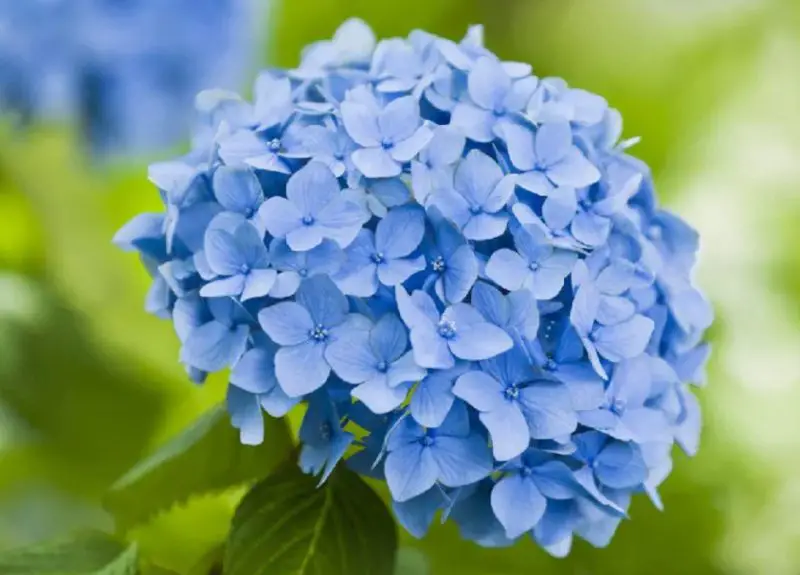
Bursting with color and charm, hydrangeas are symbols of heartfelt emotions and gratitude. Their large, vibrant clusters of flowers range from blue and pink to white and purple, depending on soil pH. Hydrangeas are a staple in floral arrangements and cottage-style gardens, known for their ability to change color based on soil acidity.
Hydrangeas thrive in USDA hardiness zones 3-9. They prefer partial shade and moist, well-drained soil rich in organic matter. Regular watering is crucial, as hydrangeas are sensitive to drought. Pruning depends on the variety—some bloom on old wood, while others flower on new growth. Adding aluminum sulfate to the soil turns flowers blue, while alkaline soil produces pink blooms, allowing gardeners to control their hydrangea’s color.
Hibiscus
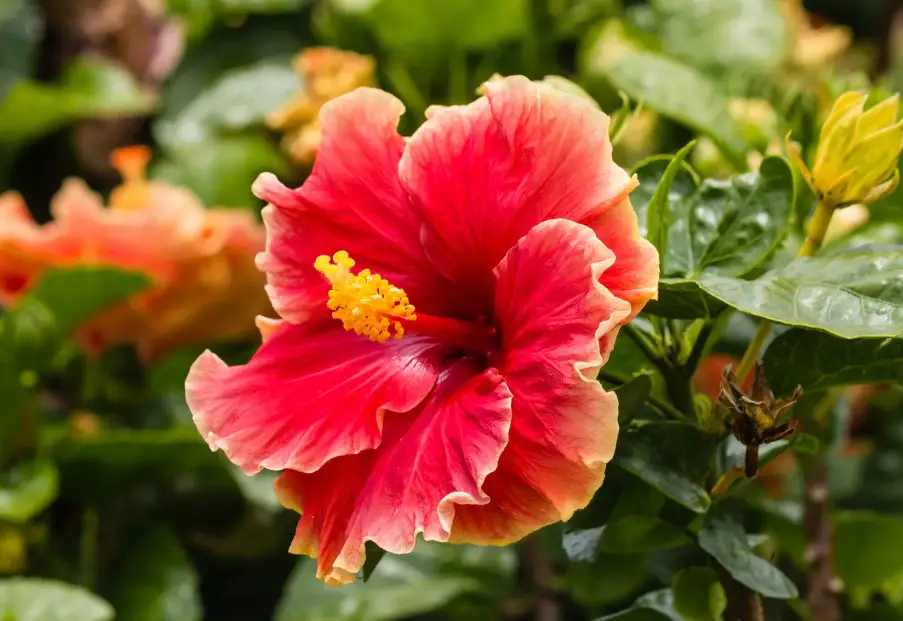
Tropical and alluring, hibiscus flowers symbolize delicate beauty and passion. Their large, vibrant blooms and glossy foliage make hibiscus a popular choice for exotic gardens. These fast-growing plants attract hummingbirds and butterflies, enhancing garden biodiversity. Some varieties, like Hibiscus sabdariffa, are used to make herbal teas known for their tart flavor and health benefits.
Hibiscus thrives in USDA hardiness zones 9-11, though hardy varieties can survive in zones 5-8 with winter protection. They require full sun and well-drained soil, blooming best with regular watering and fertilization. Pruning in early spring encourages new growth and abundant flowers. In colder climates, hibiscus can be grown in pots and brought indoors during winter, ensuring year-round enjoyment of their tropical beauty.
Jasmine
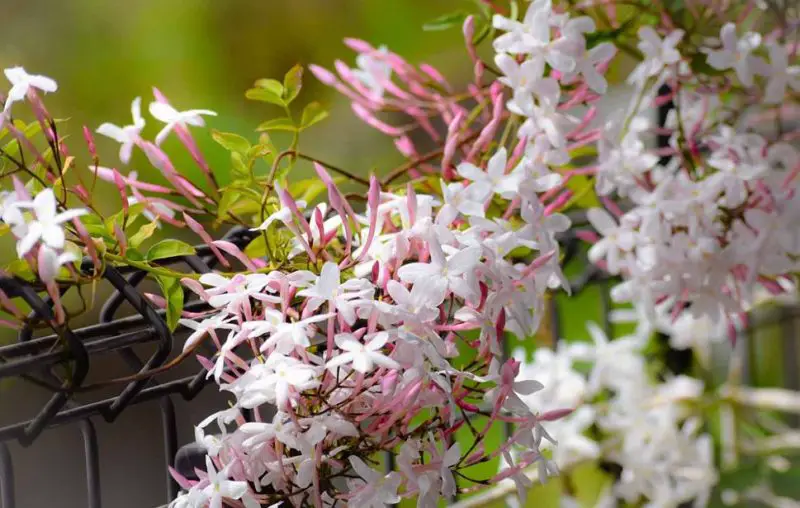
With a fragrance that enchants, jasmine is a symbol of sensuality and love. Its delicate, star-shaped blooms and sweet scent make jasmine a favorite for gardens and perfumes. Many cultures use jasmine in teas, essential oils, and religious ceremonies, valuing its calming and aphrodisiac properties.
Jasmine thrives in USDA hardiness zones 6-10, depending on the variety. It prefers well-drained soil and full sun, though some species tolerate partial shade. Regular pruning encourages bushy growth and more flowers, while trellises or arbors support climbing varieties. Watering deeply but infrequently prevents root rot, keeping jasmine plants healthy and fragrant throughout the growing season.
Chrysanthemum
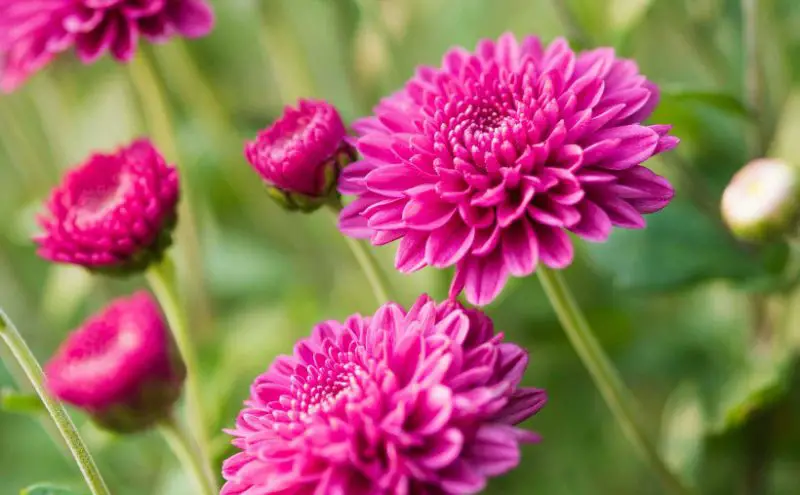
Vibrant and versatile, chrysanthemums symbolize joy and love, often associated with celebration. Their diverse colors and forms make chrysanthemums a popular choice for floral arrangements, particularly in autumn. Known as “mums,” these flowers have a rich cultural significance, especially in East Asia, where they represent longevity and happiness.
Chrysanthemums thrive in USDA hardiness zones 5-9. They require full sun and well-drained, fertile soil to produce abundant blooms. Regular deadheading extends their flowering period, while dividing clumps every few years prevents overcrowding. Applying mulch around the base helps retain moisture and protect roots during winter. With proper care, chrysanthemums provide a burst of color in the fall, brightening gardens when most other flowers have faded.
Magnolia
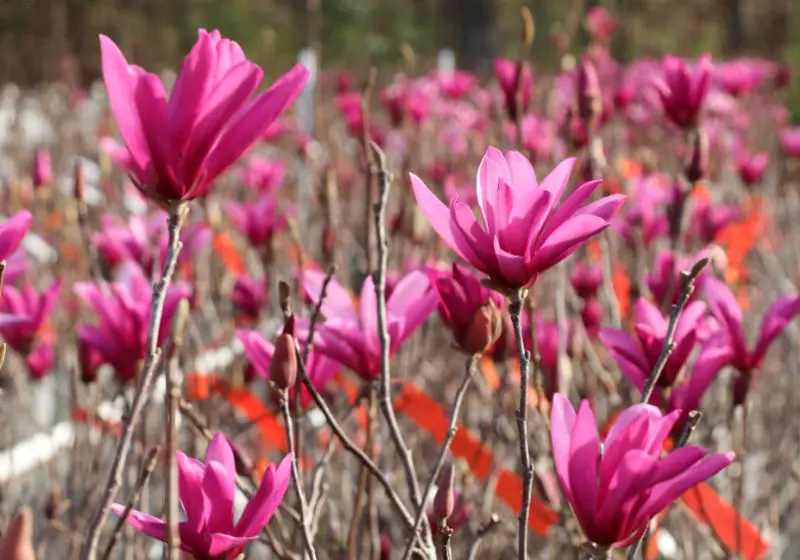
Majestic and fragrant, magnolias symbolize dignity and love of nature. Their large, creamy blooms and glossy foliage make magnolias a stunning addition to any landscape. Some species, like the Southern magnolia, produce highly fragrant flowers, while others, such as the star magnolia, bloom early in spring with delicate white petals.
Magnolias grow best in USDA hardiness zones 4-10, depending on the variety. They thrive in sunny to partly shaded areas with well-drained, slightly acidic soil. These trees are relatively low-maintenance, requiring minimal pruning. However, regular watering, especially during dry spells, promotes healthy growth and abundant flowering. With their timeless beauty, magnolias add elegance and charm to any garden.
Daffodil
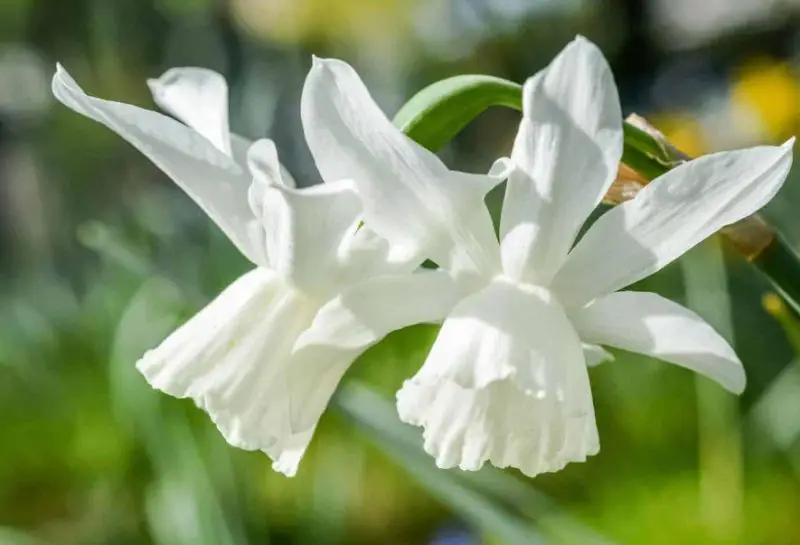
Cheerful and bright, daffodils symbolize new beginnings and love. Their trumpet-shaped blooms and sunny colors make daffodils a favorite for spring gardens. These resilient flowers are often among the first to bloom after winter, bringing a sense of renewal and optimism.
Daffodils thrive in USDA hardiness zones 3-8. They require full sun and well-drained soil, preferring slightly alkaline conditions. Planting bulbs in the fall, about 6 inches deep, ensures a vibrant display in early spring. Once established, daffodils require little maintenance and can naturalize, spreading year after year. Allowing foliage to die back naturally helps the bulbs store energy for the next season’s blooms.
Freesia
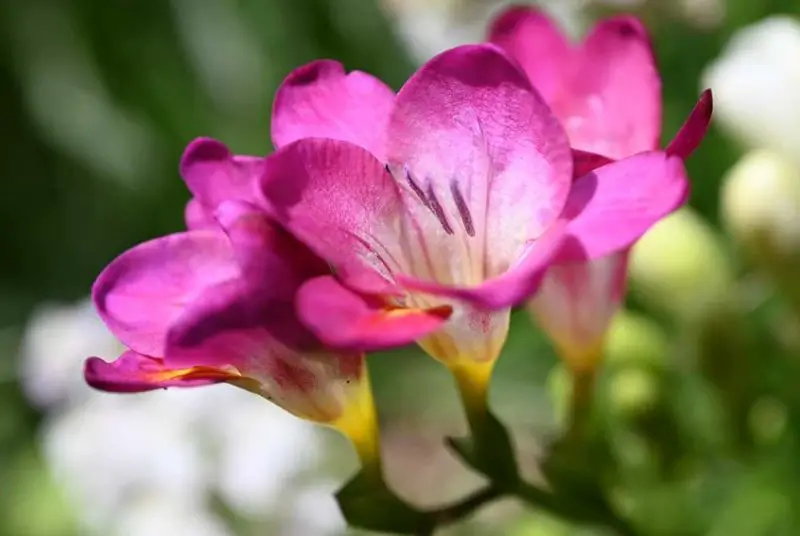
Fragrant and vibrant, freesias symbolize friendship and love. Their graceful, trumpet-shaped blooms and sweet scent make freesias a popular choice for bouquets and gardens. These flowers are available in various colors, including white, yellow, pink, and purple, each carrying a delicate fragrance.
Freesias grow best in USDA hardiness zones 9-10, though they can be grown as annuals or in containers in cooler climates. They require full sun and well-drained soil, often planted from corms in the fall or early spring. Regular watering keeps the soil evenly moist, while deadheading spent flowers promotes continuous blooming. With their elegant form and captivating fragrance, freesias bring charm to any floral arrangement.
Camellia
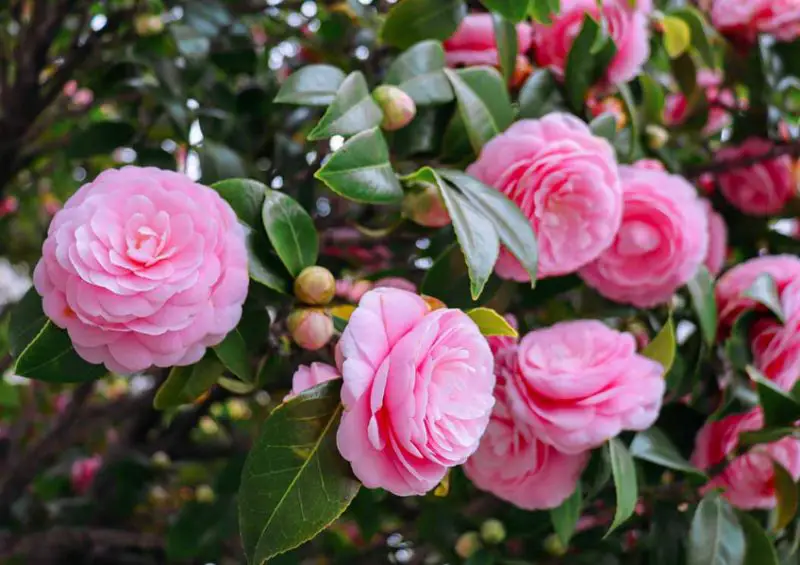
With its elegant blooms, the camellia symbolizes admiration and perfection. These glossy evergreen shrubs with rose-like flowers are a classic choice for romantic gardens. Blooming from late winter to early spring, camellias provide a splash of color when few other plants are in flower. They are especially valued in Japanese and Southern gardens for their refined beauty.
Camellias thrive in USDA hardiness zones 7-9. They prefer partial shade and well-drained, acidic soil enriched with organic matter. Consistent watering is essential, as camellias dislike dry conditions. Minimal pruning is required, but removing dead or weak branches encourages healthier growth. With their long-lasting blooms and lush foliage, camellias remain a timeless favorite among gardeners.
Anemone
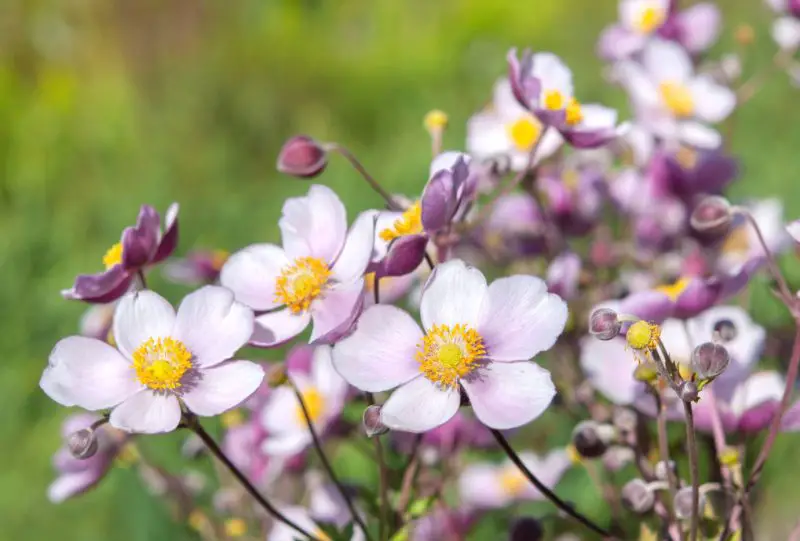
Delicate and charming, anemones symbolize anticipation and love. Their bright, poppy-like blooms and fern-like foliage make anemones a captivating choice for gardens. Available in shades of white, pink, red, and blue, anemones add a touch of elegance to floral arrangements and landscapes. These flowers are often associated with protection and good luck in folklore.
Anemones thrive in USDA hardiness zones 4-8, depending on the variety. They prefer full sun to partial shade and well-drained, nutrient-rich soil. Often grown from tubers, they should be planted in the fall for spring blooms or in early spring for summer flowering. Regular watering keeps the soil moist but not soggy, while deadheading spent blooms encourages continuous flowering. With proper care, anemones bring grace and color to any garden.
Zinnia
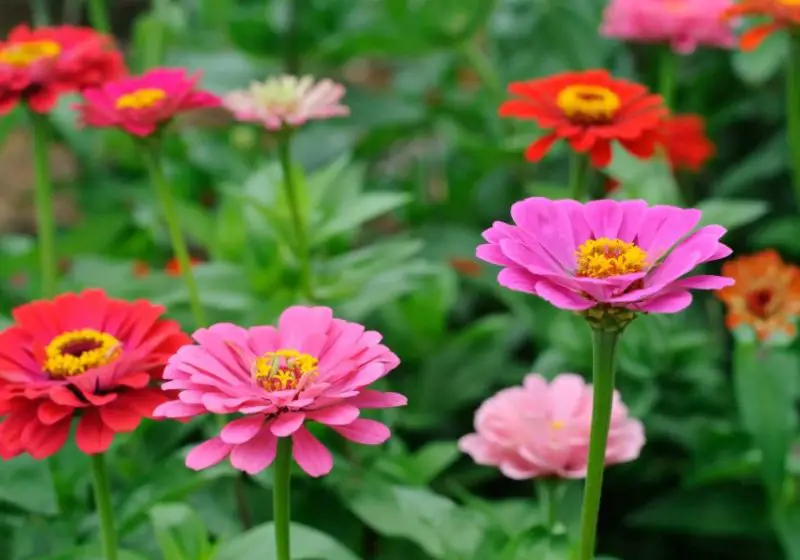
Bursting with color, zinnias symbolize lasting affection and friendship. Their daisy-like blooms and vibrant hues make zinnias a favorite for summer gardens and floral arrangements. These sun-loving flowers attract butterflies and bees, making them an excellent choice for pollinator-friendly landscapes.
Zinnias grow best in USDA hardiness zones 3-10. They thrive in full sun and well-drained soil, requiring minimal maintenance. As fast-growing annuals, they are best sown directly into the garden after the last frost. Regular deadheading promotes prolonged blooming, while spacing plants properly ensures good air circulation, reducing the risk of mildew. With their resilience and brilliant colors, zinnias keep gardens lively from summer through fall.
Begonia
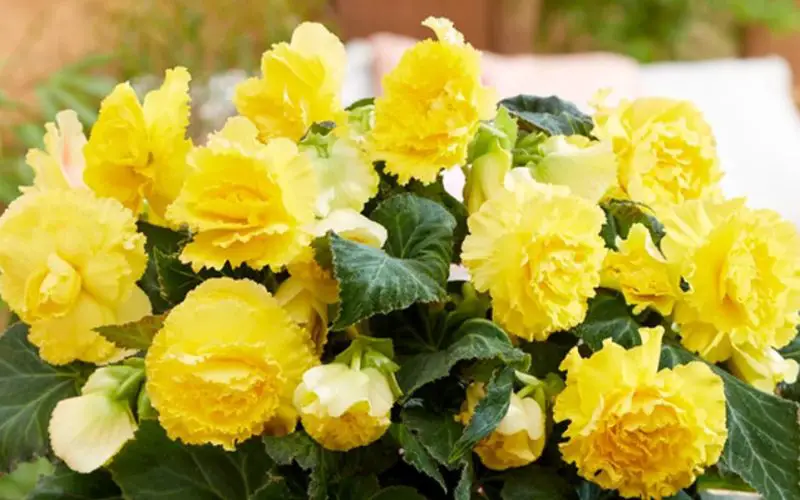
Colorful and versatile, begonias symbolize harmony and love. Their lush foliage and vibrant blooms make begonias a popular choice for gardens, hanging baskets, and indoor plants. With varieties ranging from wax begonias to tuberous and rex begonias, they offer a wide range of leaf textures and flower shapes.
Begonias thrive in USDA hardiness zones 9-11 when grown outdoors but can be cultivated as houseplants in cooler regions. They prefer shaded to partially shaded areas with well-drained, slightly acidic soil. Regular watering is essential, but soggy conditions should be avoided to prevent root rot. Removing faded blooms and damaged leaves encourages healthy growth and a continuous display of color throughout the growing season.
Calla Lily
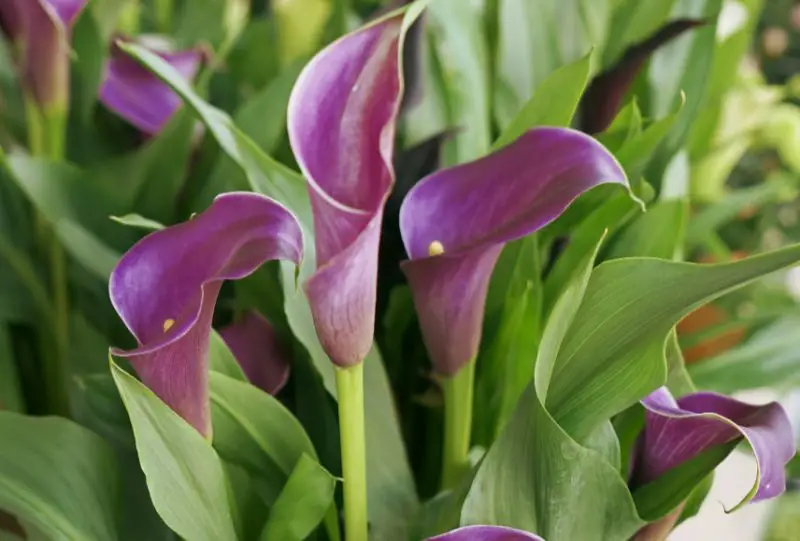
Graceful and elegant, calla lilies symbolize purity and beauty. Their trumpet-shaped blooms and smooth, arrow-shaped leaves make calla lilies a sophisticated choice for gardens and floral arrangements. These striking flowers are often used in weddings and symbolize rebirth and admiration.
Calla lilies flourish in USDA hardiness zones 8-10 but can be grown as annuals or in containers in colder climates. They require full sun to partial shade and moist, well-drained soil. Planting rhizomes in early spring results in summer blooms. Regular watering and fertilization support healthy growth, while lifting and storing rhizomes during winter helps preserve them for the next season.
Alstroemeria
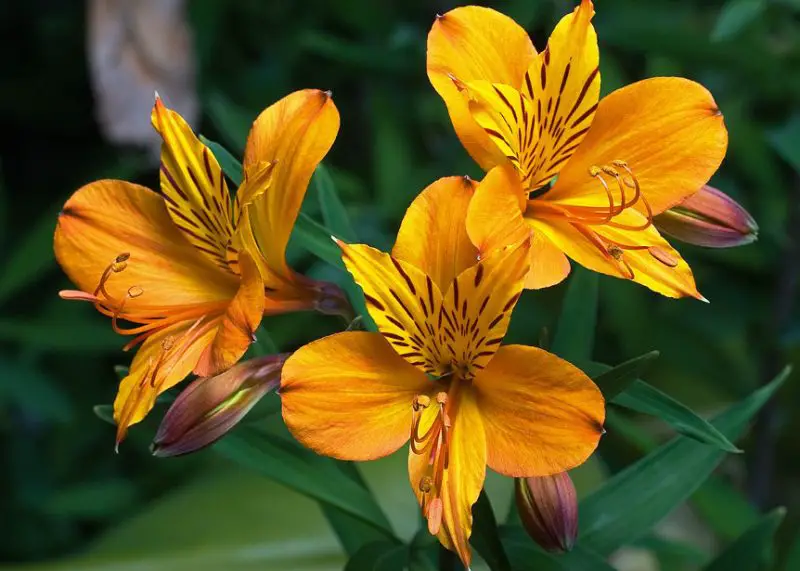
Delicate and long-lasting, alstroemerias symbolize devotion and friendship. Their lily-like blooms and vibrant hues make alstroemerias a favorite for bouquets and gardens. These flowers, also known as Peruvian lilies, have strong, wiry stems and are valued for their long vase life.
Alstroemerias thrive in USDA hardiness zones 6-10. They prefer well-drained soil and full sun to partial shade. While they require regular watering, especially during dry spells, overwatering should be avoided. Removing spent flowers and cutting stems at the base encourages reblooming. With their ability to produce flowers for months, alstroemerias bring continuous beauty to gardens and floral arrangements alike.
Snapdragon
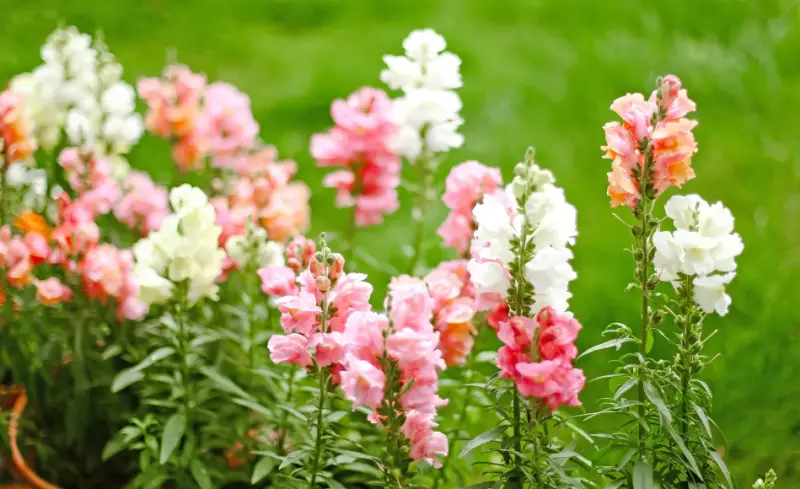
Playful and colorful, snapdragons symbolize grace and strength. Their tall spikes of tubular blooms and vibrant shades of pink, red, yellow, and white make snapdragons a captivating choice for gardens. These flowers resemble a dragon’s mouth when squeezed, adding a whimsical touch to floral displays.
Snapdragons thrive in USDA hardiness zones 7-11, preferring full sun and well-drained soil. They grow best in cooler temperatures, making them ideal for spring and fall gardens. Regular deadheading prolongs blooming, while mulching helps retain moisture and regulate soil temperature. In warmer climates, snapdragons may fade in mid-summer but often rebloom in autumn.
Sweet Pea
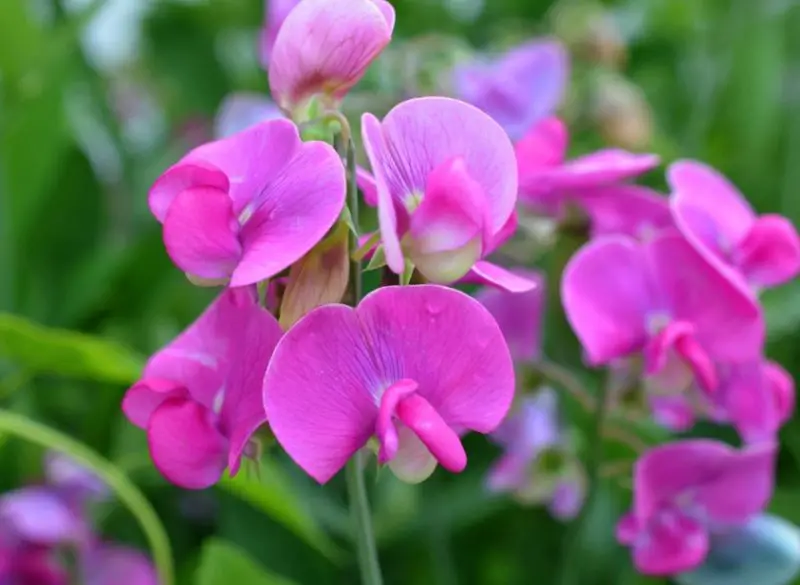
Fragrant and delicate, sweet peas symbolize blissful pleasure and friendship. Their ruffled petals and sweet scent make sweet peas a beloved choice for bouquets and cottage gardens. Available in a variety of pastel and bold hues, they add elegance and charm to any floral display.
Sweet peas thrive in USDA hardiness zones 2-9. They prefer full sun and well-drained, fertile soil, requiring a support structure for their climbing vines. Planting sweet pea seeds in early spring or late fall ensures strong, healthy growth. Regular watering and deadheading encourage continuous flowering, while mulching helps maintain soil moisture. With proper care, sweet peas provide months of delightful blooms.
Geranium
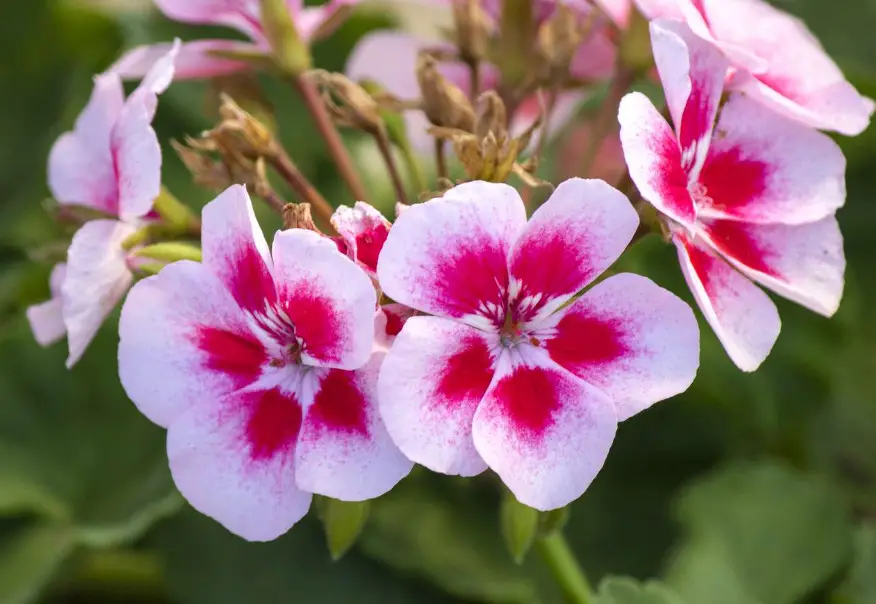
Hardy and colorful, geraniums symbolize comfort and love. Their clusters of vibrant blooms and fragrant, lobed foliage make geraniums a popular choice for garden beds, hanging baskets, and containers. Known for their resilience, geraniums can bloom continuously from spring to fall.
Geraniums grow well in USDA hardiness zones 9-12 but are often treated as annuals in colder climates. They thrive in full sun and well-drained soil, with regular watering to keep the soil slightly moist but not soggy. Deadheading spent flowers encourages more blooms, and occasional fertilization supports healthy growth. With their adaptability and cheerful colors, geraniums brighten up any garden space.
Poppy
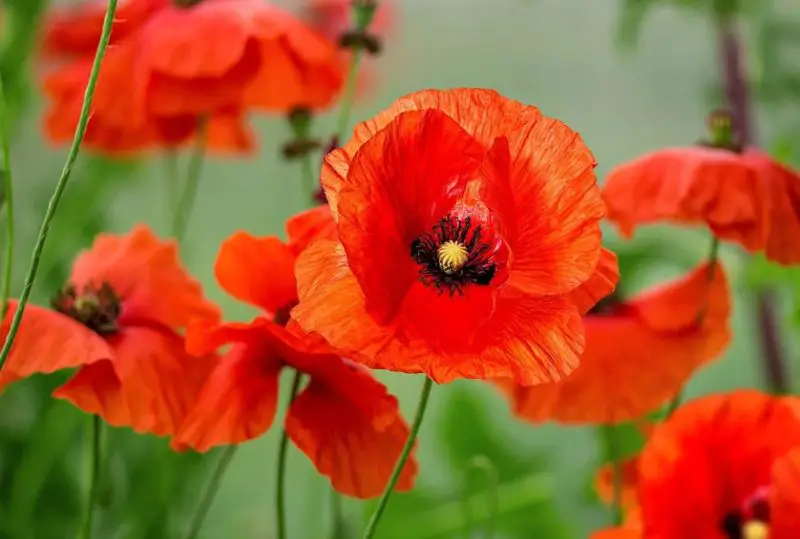
Bold and beautiful, poppies symbolize remembrance and love. Their delicate, tissue-like petals and rich colors, including red, orange, pink, and white, make poppies a striking choice for gardens. They are often associated with honoring fallen soldiers and have deep cultural significance in various traditions.
Poppies thrive in USDA hardiness zones 3-9, preferring full sun and well-drained soil. These hardy perennials or annuals are drought-tolerant and require minimal maintenance. They often self-seed, returning year after year with little effort. Sowing seeds directly into the soil in early spring or fall ensures a natural, effortless bloom cycle.
Amaryllis
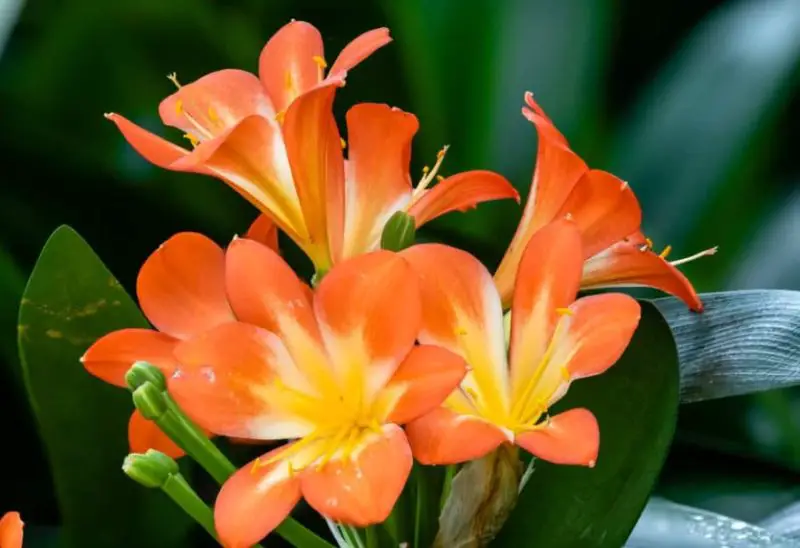
Showy and festive, amaryllis symbolizes beauty and love. Their large, trumpet-shaped blooms in vibrant red, pink, white, and bi-color varieties make amaryllis a favorite for holiday decorations and garden displays. These flowers are commonly grown indoors during winter, bringing warmth and brightness to homes.
Amaryllis grows well in USDA hardiness zones 8-11 when planted outdoors but can be cultivated indoors in cooler regions. They prefer full sun to partial shade and well-drained soil. Planting bulbs in the fall results in winter blooms, while regular watering and feeding support healthy growth. After flowering, allowing the foliage to mature naturally helps the bulb store energy for the next blooming cycle.
Bleeding Heart
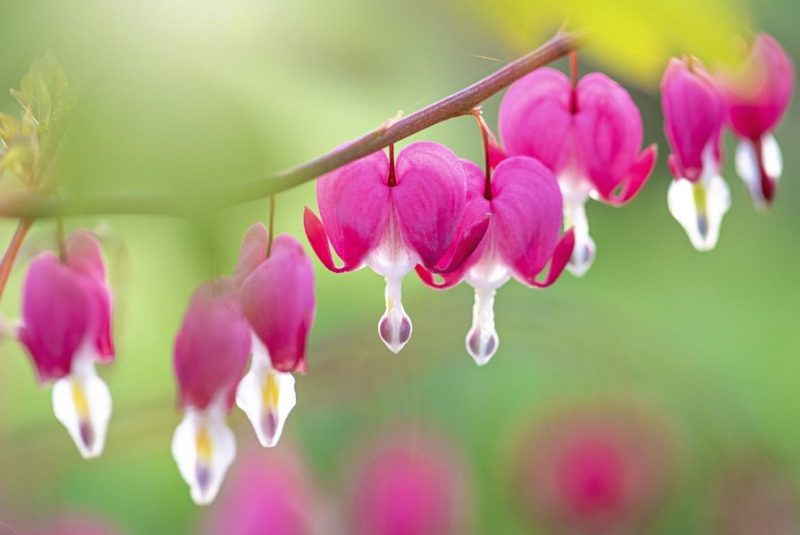
Delicate and enchanting, bleeding hearts symbolize deep emotion and love. Their unique, heart-shaped blooms dangle gracefully from arching stems, creating a romantic and whimsical garden display. Available in pink, white, and red, bleeding hearts add elegance to shaded garden spaces.
Bleeding hearts thrive in USDA hardiness zones 3-9, preferring partial to full shade and moist, well-drained soil. They bloom in spring and early summer, then enter dormancy in the heat of summer. Regular watering during dry periods and a layer of mulch help retain moisture. Minimal care is required, making them a low-maintenance yet captivating choice for woodland gardens.
Hellebore
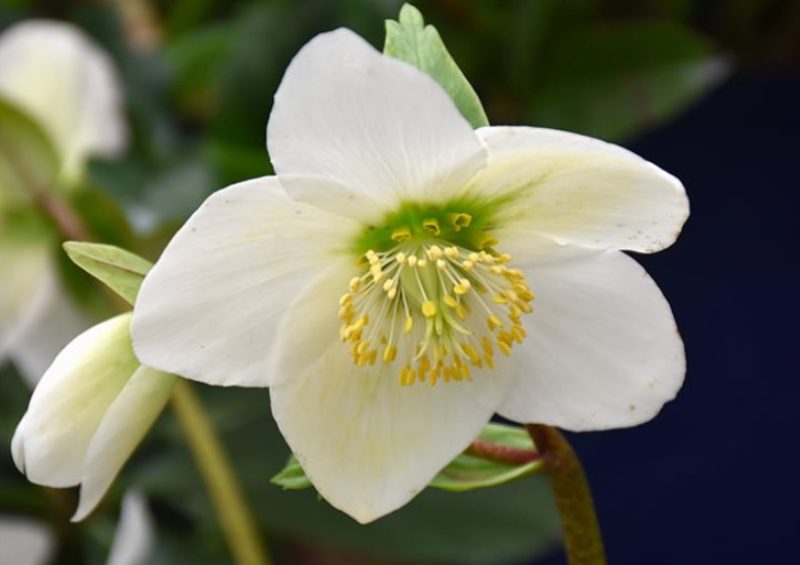
Lush and hardy, hellebores symbolize serenity and love. Their cup-shaped blooms, often in shades of white, pink, purple, and green, bring beauty to gardens when most other flowers remain dormant. These evergreen perennials are beloved for their resilience and ability to bloom in late winter or early spring.
Hellebores thrive in USDA hardiness zones 4-9, preferring partial shade and well-drained, humus-rich soil. Once established, they require little maintenance, as they are drought-tolerant and deer-resistant. Removing old leaves in late winter encourages fresh growth and enhances the beauty of their blooms. Their long-lasting flowers make hellebores a standout addition to winter and early spring gardens.
Lilac
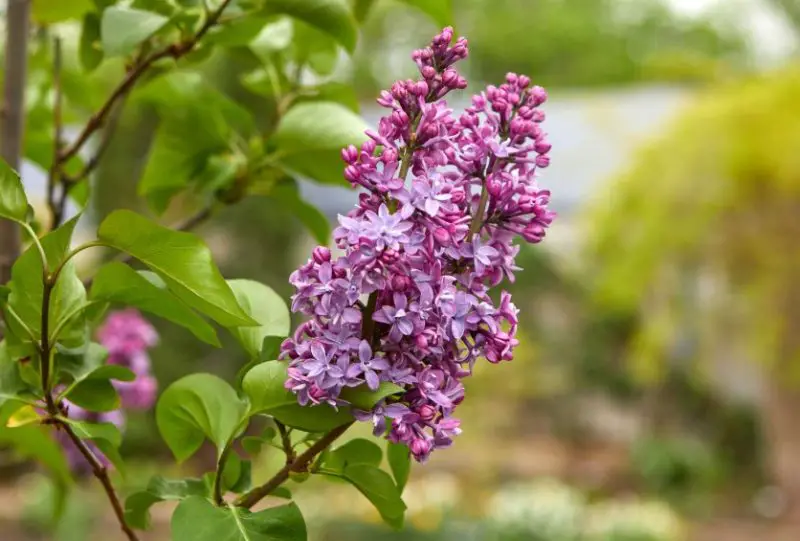
Fragrant and nostalgic, lilacs symbolize youth and love. Their dense clusters of purple, pink, white, and blue flowers fill the air with a sweet perfume, making lilacs a cherished choice for spring gardens and bouquets. These hardy shrubs are known for their longevity and ability to attract pollinators.
Lilacs thrive in USDA hardiness zones 3-7, preferring full sun and well-drained soil. They require minimal care but benefit from annual pruning after flowering to encourage healthy growth and abundant blossoms. Deep, occasional watering during dry spells helps maintain their vigor. With their stunning blooms and intoxicating fragrance, lilacs bring timeless beauty to any landscape.
Azalea
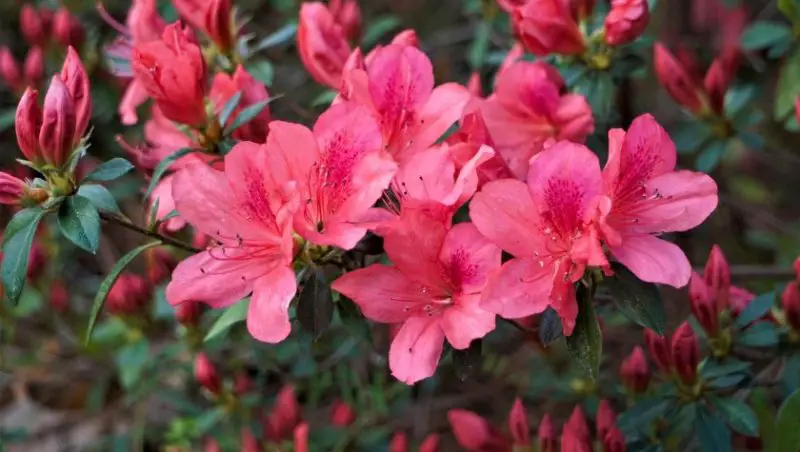
Vibrant and showy, azaleas symbolize passion and love. Their clusters of trumpet-shaped blooms in shades of pink, red, orange, white, and purple make azaleas a striking addition to gardens and landscapes. Their lush foliage provides year-round interest, even when the flowers fade.
Azaleas thrive in USDA hardiness zones 5-9, preferring partial shade and acidic, well-drained soil. Regular watering is essential, especially during dry periods, and mulching helps retain moisture and protect the roots. Light pruning after flowering maintains their shape and encourages new growth. With minimal care, azaleas create breathtaking spring displays and add vibrant color to shaded garden areas.
Petunia
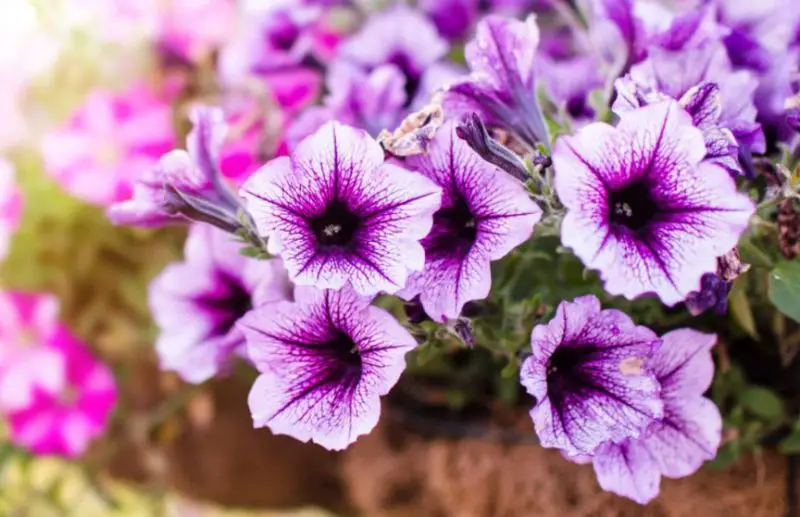
Colorful and charming, petunias symbolize desire and love. Their trumpet-shaped blooms come in a vast array of colors, from soft pastels to bold, vibrant shades, making them a favorite for garden beds, hanging baskets, and containers. Some varieties even have a delightful fragrance, enhancing their appeal.
Petunias thrive in USDA hardiness zones 9-11 as perennials but are often grown as annuals in cooler climates. They require full sun and well-drained soil, benefiting from regular deadheading to promote continuous blooming. Consistent watering and occasional fertilization keep them healthy and vibrant throughout the growing season. With their long-lasting flowers and easy care, petunias provide endless beauty to outdoor spaces.
Primrose
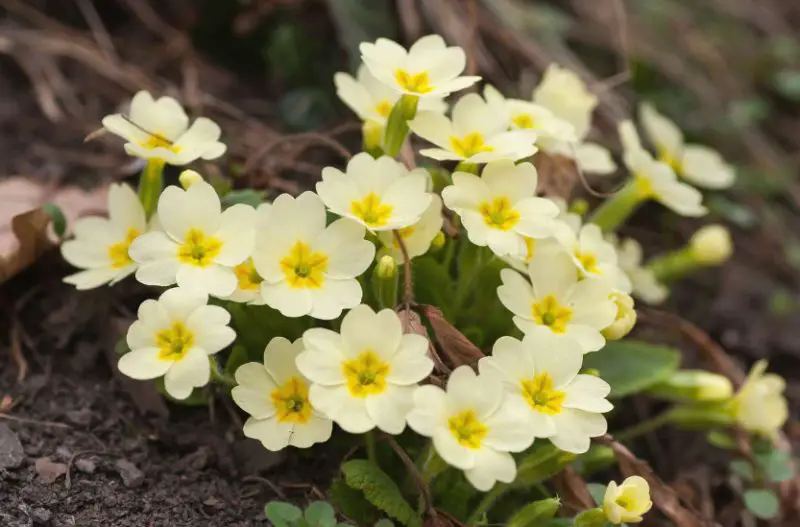
Cheerful and delicate, primroses symbolize youth and love. Their bright, cup-shaped blooms appear in shades of yellow, pink, red, purple, and white, adding early-season color to gardens. With their rosette-forming foliage, primroses create a charming ground cover in shaded areas.
Primroses thrive in USDA hardiness zones 3-8, preferring partial shade and moist, well-drained soil. They bloom in early spring and sometimes again in the fall. Regular watering, especially during dry spells, keeps their soil consistently moist. Protecting them from intense sunlight helps prevent wilting, ensuring a vibrant and long-lasting display in woodland and cottage gardens.
Marigold
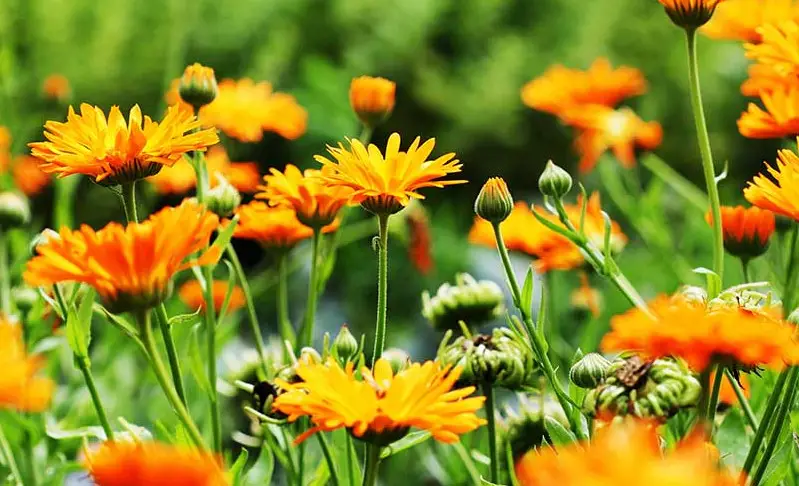
Brilliant and bold, marigolds symbolize passion and creativity. Their sunny blooms range from golden yellow to deep orange and red, often featuring intricate petal patterns. Marigolds are known for their natural pest-repelling properties, making them a popular companion plant in vegetable gardens.
Marigolds thrive in USDA hardiness zones 2-11, preferring full sun and well-drained soil. They are easy to grow from seeds or transplants and require minimal care. Regular deadheading encourages continuous blooming from spring to fall. With their drought tolerance and vibrant hues, marigolds bring warmth and resilience to flower beds, borders, and container gardens.
Foxglove
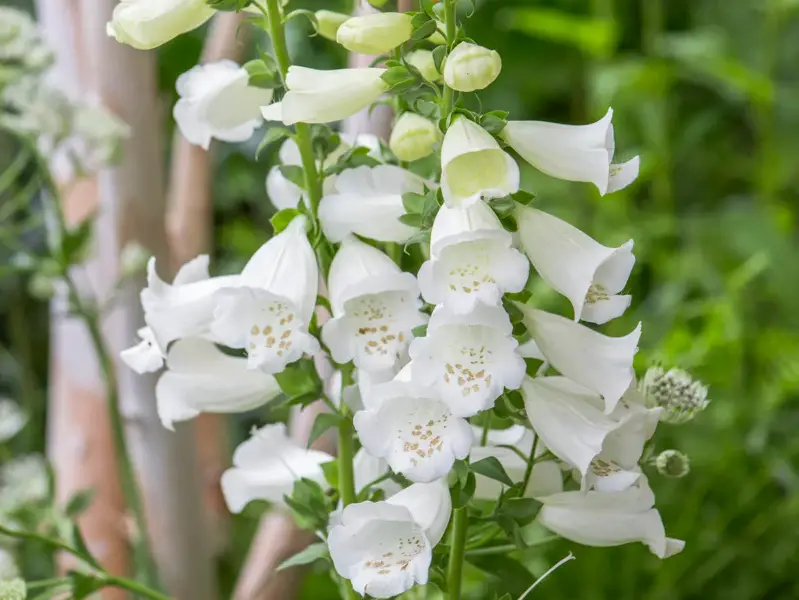
Majestic and mysterious, foxgloves symbolize protection and love. Their tall, elegant spikes of tubular flowers bloom in shades of pink, purple, white, and yellow, attracting pollinators like bees and hummingbirds. Despite their beauty, foxgloves contain toxic compounds and should be handled with care.
Foxgloves thrive in USDA hardiness zones 4-9, preferring partial shade and well-drained, slightly acidic soil. These biennials or short-lived perennials often bloom in their second year. Once established, they require minimal maintenance, self-seeding to return year after year. Their dramatic height and enchanting flowers make them a stunning addition to cottage and woodland gardens.






